In this Newsflash, we find out why the Asian monsoon season sends pollutants into the stratosphere, a new electrical technique for desalination and why swine flu spared the older generation. Plus, new understanding of the genesis of coronary arteries.
In this episode
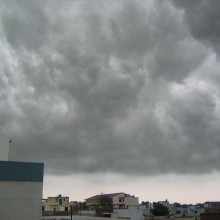
00:09 - Monsoon Season Spreads Pollutants Skywards
Monsoon Season Spreads Pollutants Skywards
A paper published in the journal science shows that pollution in Asia gets pushed up into the stratosphere by hitching a ride on the monsoon.
William Randal at the National Center for Atmospheric Research, Boulder, Colorado, and an international team including researchers at York and Edinburgh Universities, used satellite imaging to keep track of hydrogen cyanide, a pollutant associated with burning that usually stays mainly in the troposphere - the lowest portion of Earth's atmosphere.
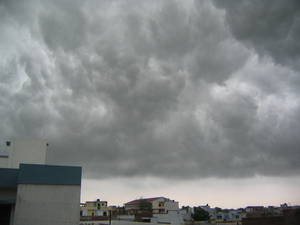 Hydrogen cyanide is a particularly apt choice as most of it is lost to the ocean - there's relatively little high up in the troposphere, so with normal circulation there will be little to move into the stratosphere.
Hydrogen cyanide is a particularly apt choice as most of it is lost to the ocean - there's relatively little high up in the troposphere, so with normal circulation there will be little to move into the stratosphere.
In general, air is circulated from the troposphere to the stratosphere (the next layer of the atmosphere - starting somewhere between 10 and 50 kilometers altitude) at the tropics, as part of something called the Brewer-Dobson circulation. But this paper shows that the Asian summer monsoon acts as an effective pathway for rapid transport of air upward from the Earth's surface, which in turn provides a route for pollutants like black carbon, sulfur dioxide, and nitrogen oxides to gain access to the stratosphere. This route is there because the monsoon itself contains a strong anticyclonic votex - a circulation of winds around a high pressure region that pushes air up from the ground.
Once pollutants get into the stratosphere, they're likely to be moved around the world, and impact on atmospheric chemistry, such as reacting with ozone - it also creates a barrier between some pollutants, such as HCN, and the ocean, which acts as a sink. In the atmosphere, HCN has a lifetime of around 4 years.
This gives us cause for concern, for not only is the industrial pollution of Asia increasing at an unprecedented rate, but it seems to have a pipeline direct to the stratosphere. So pollution from Asia could have a greater effect on atmospheric chemistry than we've thought possible.
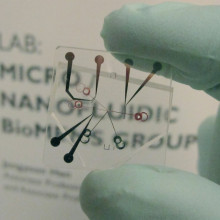
02:58 - Electrical Desalination
Electrical Desalination
Water is one of our most fundamental needs, and many natural disasters can remove our source of clean fresh water. One inexhaustable source of water is of course the sea, but the salt makes it no use for drinking. There are various ways of desalinating this water, but most of them don't scale down very well, even reverse osmosis - essentially filtering out the salt with a special membrane - requires large pressures, which requires a pump and the membranes tend to get gummed up by contaminants.
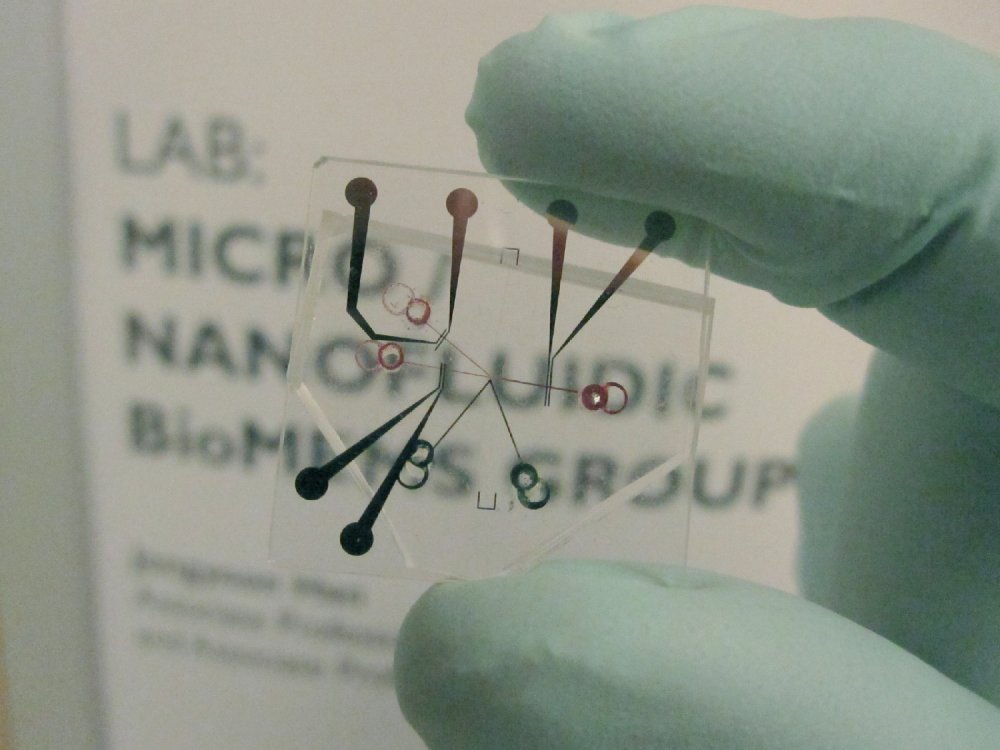 |
| A new energy-efficient desalination system utilizing ion concentration polarization as the core mechanism. Both salts and any charged colloids in seawater are diverted into the brine channel, leaving the other channel relatively salt- and particle-free. The system could be made portable and operated by current battery technolgy. © Credit: Sung Jae Kim/Jongyoon Han - Nature Nanotechnology |
Sung Jae Kim from MIT and colleagues have come up with an alternative. Instead of using a membrane to separate the salt from the water they are using electricity. They have made a y shape of channels about half a mm wide. The dirty water comes in along the stem of the Y and on one of the two arms is a nafion nanojunction. This is a material which will let positively charged ions flow through it but not negative ones. This is made negatively charged and a current flows along the arm in the wrong direction. This leaves lots of negatively charged ions piling up and flow up the other arm. These take any other charged species with it, including the ions in salt and bacteria and other contaminants leaving water with 99% of the salt removed.
It isn't as efficient as reverse osmosis, but it is intrinsically a much smaller scale process so you could build a machine consisting of maybe 1600 of these junctions to purify maybe 15l of water a day and because the contaminats are pushed away from the sensitive parts of the system it doesn't clog up like a membrane.
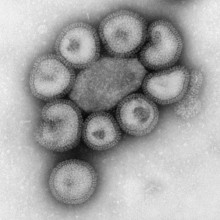
05:02 - Why Age offers Protection from Pandemic Flu
Why Age offers Protection from Pandemic Flu
Research looking at the shape of the H1N1 pandemic flu virus has revealed why seasonal flu vaccines don't offer any protection, but also suggests why the older generation are more likely to have immunity to the pandemic virus.
Two papers, one published in the journal Science by Ian Wilson and colleagues, the other in Science Translational Medicine by Gary Nabel et al., looked at slightly different aspects of the virus, and together make some interesting conclusions.
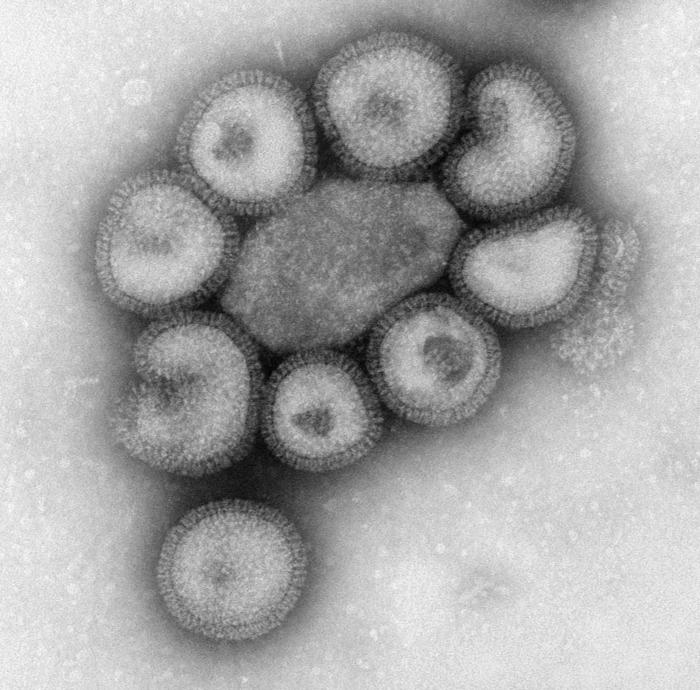 Writing in in Science Translational Medicine, Gary Nabel and colleagues exposed mice to seasonal and pandemic flu strains both 1918 and 2009, and analysed the antibodies they produced in response. They found that the antibodies against pandemic viruses protected the mice from both the 2009 and 1918 pandemic flu, but that seasonal flu antibodies offered no protection from pandemic viruses. They did, however, protect very well against the against seasonal flu. This tells us that there is something about the structure of both pandemic viruses that antibodies can lock onto - something they don't share with the seasonal flu virus particles.
Writing in in Science Translational Medicine, Gary Nabel and colleagues exposed mice to seasonal and pandemic flu strains both 1918 and 2009, and analysed the antibodies they produced in response. They found that the antibodies against pandemic viruses protected the mice from both the 2009 and 1918 pandemic flu, but that seasonal flu antibodies offered no protection from pandemic viruses. They did, however, protect very well against the against seasonal flu. This tells us that there is something about the structure of both pandemic viruses that antibodies can lock onto - something they don't share with the seasonal flu virus particles.
They found, and these results were confirmed by the analysis of the crystal structure of the viruses published in Science, that the antibodies were attaching to a protein that sits on the outside surface of the virus - called the spike protein - so called because it helps to infect cells. Interestingly, the structure of the spike protein is very similar in both the 1918 and 2009 pandemic viruses. They share a nearly identical epitope - that's a region of a molecule with a defined shape to which an antibody can attach.
In the seasonal virus, however, the spike protein is obscured by two sugar groups - this stops the host immune system from recognising the virus, and is one reason why vaccines designed for pandemic viruses offer no protection from seasonal forms.
Not only does this tell us why you don't develop immunity to both types of flu, but it also hints at why older people were more likely to be protected against last year's H1N1 pandemic - exposure to the 1918 strain as a child may well have attuned their immune system to the shape of the spike protein, and therefore offered some immunity.
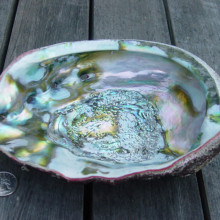
07:28 - Snail inspired coatings
Snail inspired coatings
Ceramics - materials like pottery - have all sorts of very useful properties, they are very hard, resistant to heat, some are very strong etc. but their use has been very limited because they are very brittle. They are not tough which means they can't absorb energy from an impact without shattering, and once a crack starts in the ceramic it keeps on going to the edge of the material.
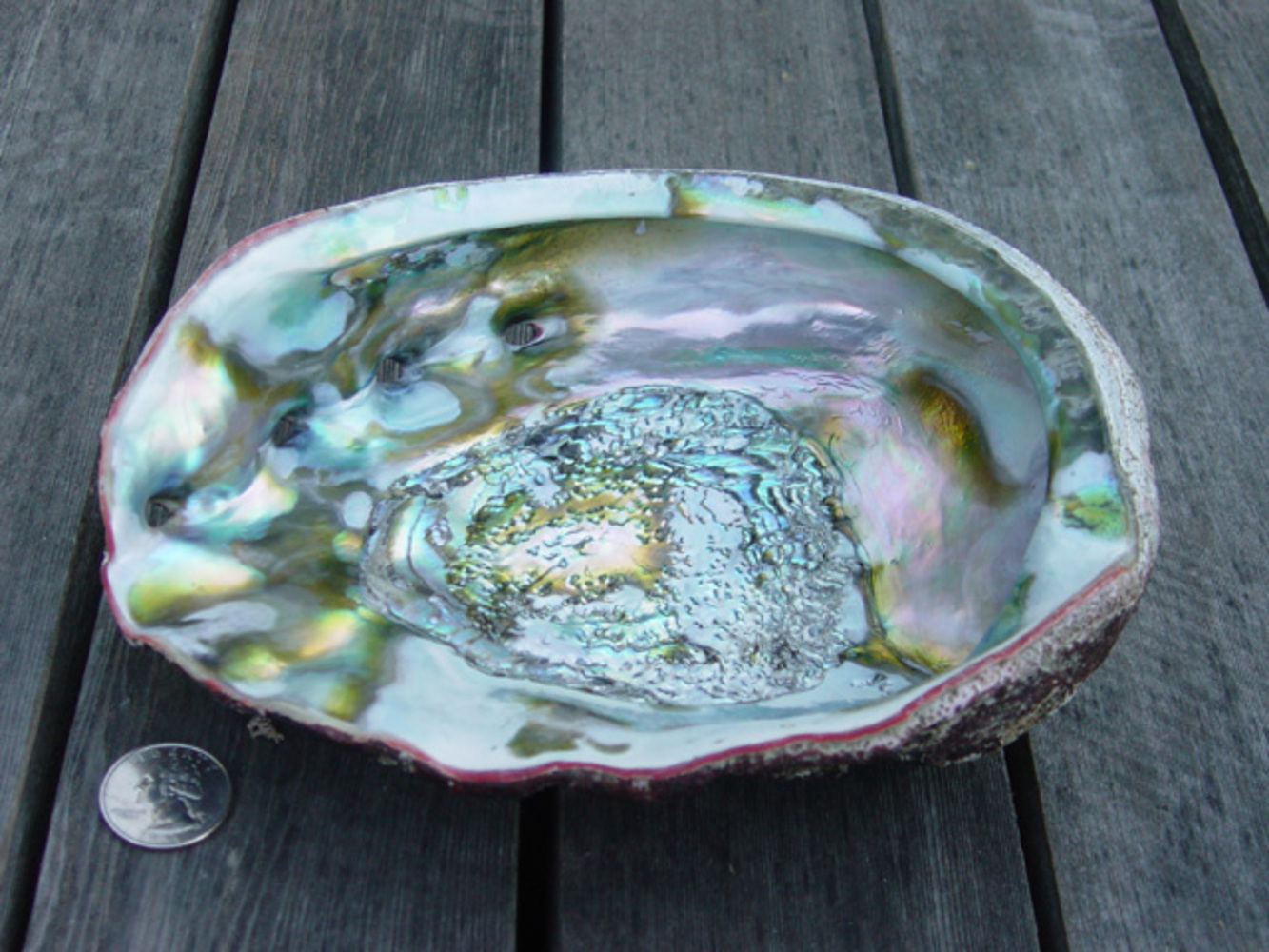 For a while scientists have been fascinated by shelled animals, their shells are made up tiny plates of the brittle ceramic calcium carbonate - effectively limestone - mixed with proteins to give a very tough material which can survive an incredible amount of abuse. This is because a crack can only travel through a single plate and then stops at the edge. Many scientists have been interested in these properties and have tried making various materials in the lab with interesting properties.
For a while scientists have been fascinated by shelled animals, their shells are made up tiny plates of the brittle ceramic calcium carbonate - effectively limestone - mixed with proteins to give a very tough material which can survive an incredible amount of abuse. This is because a crack can only travel through a single plate and then stops at the edge. Many scientists have been interested in these properties and have tried making various materials in the lab with interesting properties.
Andreas Walther, from Helsinki in Finland, has managed to make a similar structure out of a clay which is made up of microscopic plates and PVA glue that is very easy to make and could be painted onto walls or an aircraft skin.
The properties are very similar to fibreglass but it can be applied more easily and is much thinner. Apparently tests with flamethrowers also show that it is very fire resistant as well.
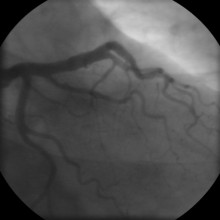
09:11 - How the Heart got its Arteries
How the Heart got its Arteries
Dr Paul Riley, University College London
Ben - Also in the news this week, a paper in the journal Nature overturns a 100-year-old misunderstanding about how the arteries that supply the heart with blood first develop. Paul Riley from University College London is the author of the News and Views article that accompanied the paper and he joins us now. Hello, Paul.
Paul - Hi.
Ben - So first of all, what has been the prevailing idea for the last hundred years, if not more, about how coronary arteries actually form?
Paul - Well, it's an evolving idea really. So initially, the coronary arteries were thought to bud off from the main vessel aorta that serves the rest of the body. That was disproven when, actually, vessels were shown to in growing to the aorta, so the reverse process. And then more recently, over the last 20 years or so, studies in chicken and quails have shown that a transient organ called the pro-epicardial organ, which sits just above the developing liver at the base of the heart if you like, that contributes cells which can give rise to the epicardium which surrounds the heart. Those cells subsequently give rise to endothelial cells which make up the coronary arteries. So that was the most common idea as it stands before this paper.
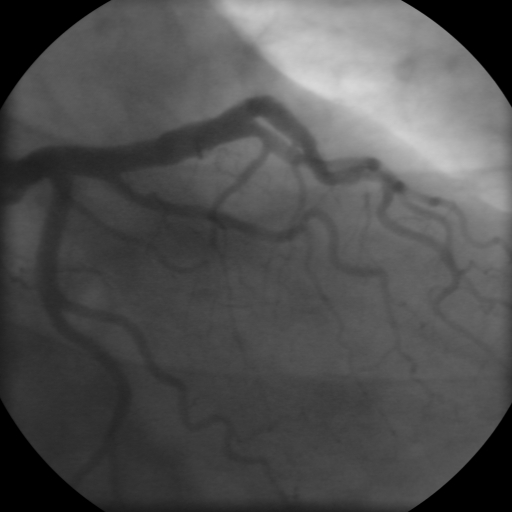 Ben - And what have they discovered now? What's new about this paper?
Ben - And what have they discovered now? What's new about this paper?
Paul - Well a previously unsuspected source really. What they've shown is, by very carefully tracking individual cells within the mouse heart through genetic tagging, they've shown that cells can emerge from the inflow region - a region where there's a large venous input called the sinus venosus - and that these cells can de-differentiate, as vein cells, and actually give rise to new cells that then become artery-like and actually form the developing coronary artery. So it's a completely unsuspected source of cells and moreover, the fact that they can de-differentiate and change their fate from veins to arteries is the real crux of the finding.
Ben - So these cells start out as a vein cell.
Paul - That's right.
Ben - And then they turn into just a general cell and what do they do then? Do they migrate themselves or do they grow through into the tissue?
Paul - Yeah. I mean, you have to get the de-differentiation, the change of the sort of vein cells. So they have to de-differentiate to become more progenitor-like. And then they have to migrate inward and start to form a plexus where they're connected into the muscle tissue of the developing heart and then they become fated to become arterial cells. So they start to turn on characteristic markers, which suggests that they are becoming arterial-like. That network then progresses throughout the developing muscle of the heart to form the coronary artery network.
Ben - Now, what does this tell us with regards to adults with heart condition because all of this work has been looking at the embryonic development - where these arteries first comes from. But of great concern to many, many people is what happens when these arteries becomes blocked or become damaged later in life as an adult. Can we learn anything from this work that could help us to treat people?
Paul - Well I think there's a very basic principle that if you understand how the heart is put together, both at the coronary vessel side and also the developing muscle, then understanding the cell behaviour and the signals that trigger that can be applied to the adult setting. So, some of these cells are present in the adult heart and therefore, if we understand how to re-trigger the process of making new vessels, then obviously, we're going to position where we can re-vascularise an injured heart that has lost blood vessels and also muscle after a heart attack. So, it's fundamentally important to understand how these vessels are made in the first place to then go back into the adult, track a similar cell population and then be able to stimulate with appropriate signals to make new vessels. So it's completely translatable although some way off in terms of the realistic research goal. But this is a major step in the right direction and through understanding, taking these studies further, how they switch from veins to arteries and understanding the signals from neighbouring tissues to allow this to happen should be able to do then be fully translated into the adult setting and hopefully set up a therapeutic by way of making new blood vessels.
Ben - Very promising stuff. Obviously very early stages but very promising. Thank you ever so much Paul. That was Paul Riley from the UCL Institute of Child Health. You can find his News and Views article and the paper itself which is by Kristy Red-Horse and colleagues at Stanford University. You can find them both in this week's Nature Magazine.









Comments
Add a comment